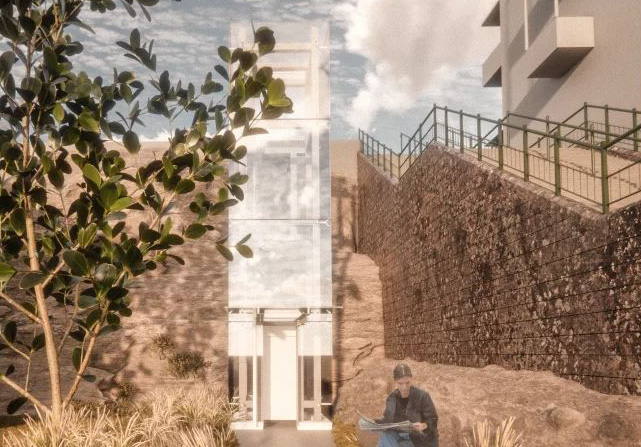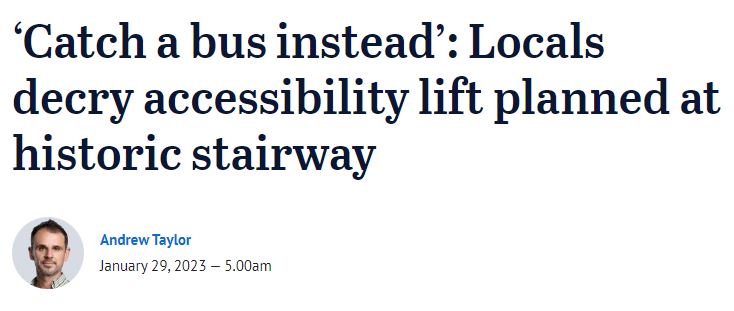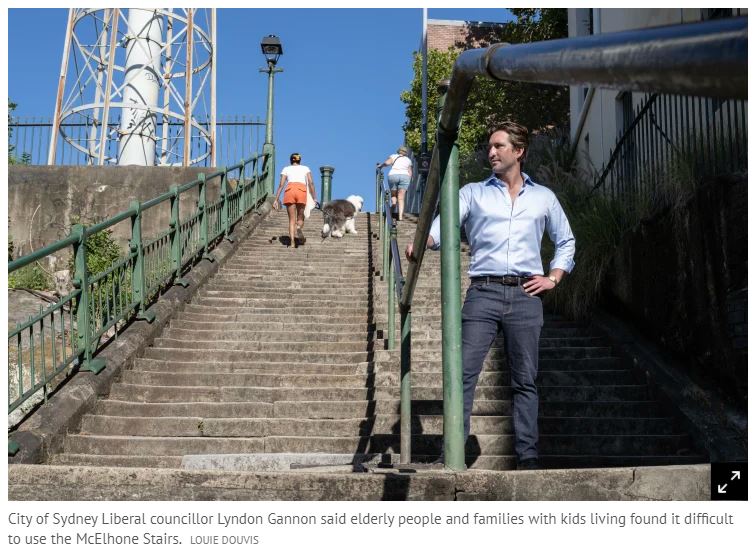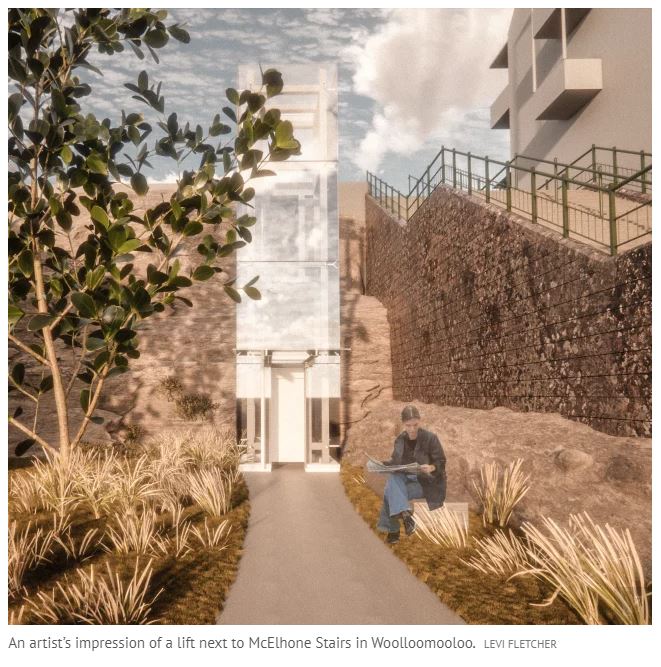

Plans for a lift next to one of Sydney’s public stairways have stoked concern from a residents’ group that says people who cannot climb the steep set of steps should catch a bus instead.
The City of Sydney will investigate the feasibility of a lift next to the historic McElhone Stairs after the council backed Liberal councillor Lyndon Gannon’s call for improved accessibility between Potts Point and Woolloomooloo.

Gannon said a lift next to the stairway would make it easier for pedestrians to go from Kings Cross, through Woolloomooloo and past the Art Gallery of NSW, to Sydney’s CBD.
“The steps have served the community well for over 100 years,” he said. “But it’s time for an accessibility upgrade.” Gannon said the demographics of the inner city were changing, with more elderly people and families with kids living in the area. “People, especially elderly folks and mums with prams, find it really hard to navigate them,” he said.

Potts Point and Kings Cross Heritage Society president Andrew Woodhouse said he was not opposed to the plan if it was genuinely required by large numbers of residents and had minimal heritage and visual impacts on the stairway. However, Woodhouse said people unable to climb the heritage-listed stairway could catch a bus instead.
“People wanting to come up the stairs could use the 311 bus with its bus stop at the foot of the stairs and arrive in Macleay Street,” he said. “To descend to Woolloomooloo, locals in Potts Point can also use the 311 bus as they do now.” Woodhouse said a lift should not be built until its heritage and social impacts were assessed and costs, including ongoing maintenance, were revealed.
One of several public stairways in inner-city Sydney, McElhone Stairs is one of three that connect Woolloomooloo to Potts Point.
Australian Institute of Architects chairwoman Jennifer Preston said public staircases were an important part of the city’s urban heritage. McElhone Stairs was the site of espionage activities during the Cold War when it was used as a secret drop-off point by Soviet spies. The historic stairs have also been featured in movies, novels and paintings by Sali Herman, John Olsen and Brett Whitley.
Preston said public staircases such as McElhone Stairs were free and open to anyone able to access them physically to enjoy the views, opportunities for exercise and the shortcuts they provide.
“I think if we are to have a city where the access is as equitable as possible then a lift between the lower level of Woolloomooloo and the upper level of Victoria street is crucial,” she said.
NSW branch of the National Trust’s director of conservation David Burdon said there were terrible examples of an ugly ramp or unsympathetic lift poorly grafted onto an old building with little care or attention.
But he said modern accessibility requirements can often be reconciled with heritage values. “After all, the McElhone Stairs were ultimately a beautiful municipal response to an accessibility problem,” he said. “Hopefully, a similarly beautiful response can be delivered to address the same issue for today’s needs.”
Physical Disability Council of NSW chief executive Serena Ovens said it would be fabulous to provide lift access wherever there were stairways.
But she said it was more important to include full accessibility “from the beginning of any project, not as an afterthought” and provide options for people with disability that do not require significantly longer travel times.
Ovens said lifts have been installed on landmarks such as the Sydney Harbour Bridge without impacting heritage values. “Australia needs to step up and overcome its aversion to improving access,” she said, “both in our heritage buildings and places and in the new structures we build.”
